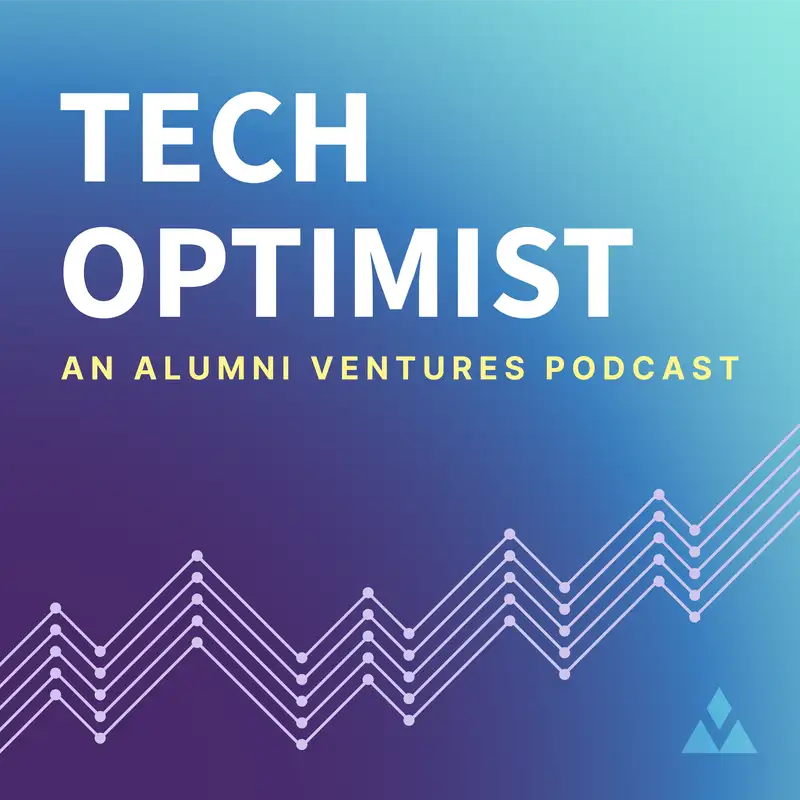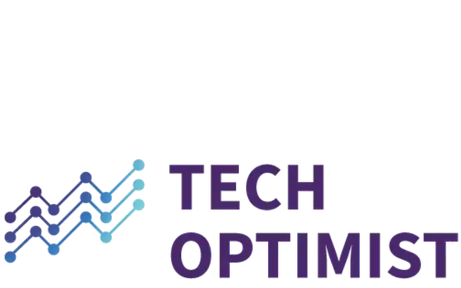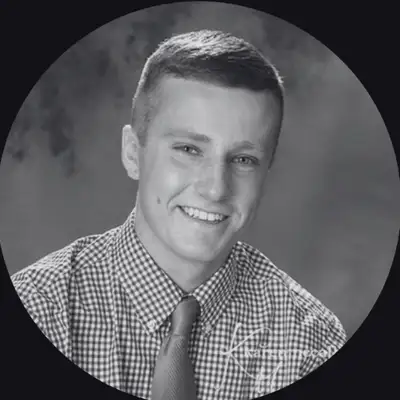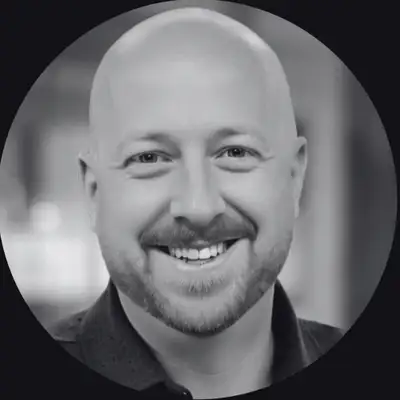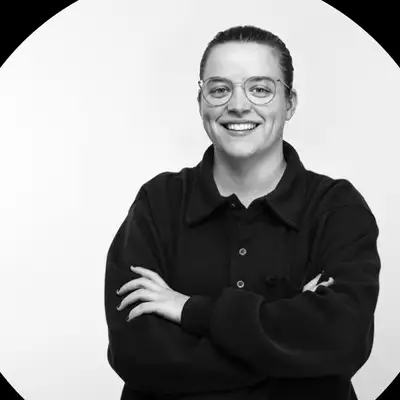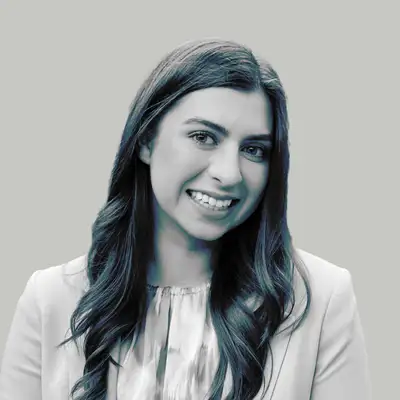#21 - Transforming 911: The New Company Updating These Lifesaving Calls
Sam:
Today we are talking about a company reinventing 911. My name is Sam, the footnote collector for this podcast, and welcome to the Tech Optimist.
Mike Collins:
Yeah, so I mean, this is literally life and death kind of stuff where minutes count and location counts, and-
Michael Martin:
There's a variety of things that we can do intelligently from your device. Make sure we're really making sense of all that data, operationalizing and making it useful. Harnessing the power of AI. This was a mom who went into labor early and her iPhone got enough data into 911 through us and out to the ambulance that they were able to save her life
Sam:
In a world captivated by criticism, it's easy to overlook the groundbreaking technologies shaping our future. Let's shine a light on innovators who are propelling us forward. As the most active venture capital farm in the US, we have an exceptional view of tech's real world impact. Join us as we explore, celebrate, and contribute to the stories of those creating tomorrow. Welcome to the Tech Optimist.
As a reminder, the Tech Optimist podcast is for the informational purposes only. It's not personalized advice and it's not an offer to buy or sell securities. For additional important details, please see the text description accompanying this episode.
Mike Collins:
All right. Welcome to the Tech Optimist podcast. I'm here with Michael Martin, who's the CEO of an AV portfolio company, Rapid SOS, company we've invested in a few times, and Michael, welcome to the show.
Michael Martin:
Yeah, thanks for having me. Great to be here.
Mike Collins:
So tell our audience a little bit about Rapid SOS. What do you guys do?
Michael Martin:
Yeah, so Rapid SOS is an intelligent safety platform. So basically what we do is intelligently link any sort of connected device or system with 911 in first responders in mission-critical moments. So I'll give you just a few examples of what actually that looks like here, Mike. So one example would be from your smartphone, like if you go to call 911, previously 911, basically it was a analog voice-based connection. So the result is it was very difficult for first responders to locate you, and typically they wouldn't even know your name.
So what we've done since spinning out of grad school is basically unify every first responder agency in the United States and now working on in six different countries onto one standardized digital platform. So the result is if you call 911 from a smartphone in the United States, now typically 911 is going to get your location with real time updates.
During that call, if you filled out some sort of health profile app like your medical ID and your iPhone or a Google Health app, that information can come across. Your name, your native language, emergency contact notification. So there's a variety of things that we can do intelligently from your device. And this extends obviously beyond mobile devices to all sorts of connected devices, whether it's a home security system, a vehicle that is in an accident and automatically notifying, or even one of the more recent deals that we did was to keep communities safe when there's hazardous materials transported via train through their community is another example.
Mike Collins:
So I mean, this is literally life and death kind of stuff where minutes count and location counts and yeah, it's really interesting. And this has been old technology that was better than nothing. But now in 2024, we need to be doing things in a whole new and better way, much more precise.
Michael Martin:
Yeah, I would say. So first of all, the scale of this stuff we often don't realize, but last year there were approximately 250 million 911 calls spread out across the United States. So statistically around three out of four Americans called 911 last year. Now it turns out it's not evenly distributed. There's preexisting health conditions, domestic violence, there's certain conditions that cause someone to use 911 more than others, but this is this ubiquitous service we all rely upon, 650,000 incidents a day.
And in those worst moments, traditionally 911 didn't even know your name. And it is a testament to the people of 911 that the system works as well as it does, but not the infrastructure. I mean, there is limited to no federal oversight of this, sometimes even limited state oversight. So you're talking about every small town community in the United States over the last 50, 70 years have tried to put together one of these systems, and that's quite complicated and challenging. And again, you just have this extraordinary community of first responders that are out there every day saving lives despite the technical limitations.
So yeah, it's quite exciting to partner with that community to really take on that challenge. And today, last year we supported 171 million emergencies with 3.3 billion data payloads. So starting to really digitally integrate all those systems.
Speaker 4:
Hi, just a brief interruption to introduce you to the Health Tech Fund from Alumni Ventures. Alumni Ventures is one of the most active and best performing VCs in the US and we have raised over a billion dollars from more than 10,000 individual investors. With our Health Tech Fund, you'll have the opportunity to invest in a portfolio of around 20 health tech startups, from transformative healthcare services to groundbreaking diagnostics. Our founders are paving the way for a healthier future. To learn more, visit us at av.vc/funds/healthtech.
Mike Collins:
Yeah, I mean, this is a case of taking on a hard problem. I mean, I think a lot of people perceive venture capital as a, "Oh, you have a great idea, and three years later", but talk about your journey. I mean, this is a hard problem that takes a decade or more to really fix. So tell us about the journey a little bit and where are you in that trip?
Michael Martin:
Yeah, so I grew up in a farming community in rural Indiana and came to New York City for that first big finance job after college. And I was a junior guy working at a venture capital firm. It was annual meeting season, so I was making slides till two in the morning and got off the subway at 110th and Lex, in Spanish Harlem, and had my welcome to New York mugging experience.
And Mike, it's the first time I ever thought about calling 911 is the first time I realized in the middle of an emergency just how hard it is to get out your phone, dial a number and have a coherent conversation. And Uber had just come out and I thought, "I can press a button and get a car service. Why can't I just press a button and get police, fire, EMS?" So obviously that was crazy naive at the time in hindsight, but that was the initial genesis and began cold calling 911 centers across the United States.
And just amazingly, these directors would give me 30, 60 minutes. And quickly what I learned is it's not a UI problem, it's a national infrastructure problem. And so went to grad school. So I did my MBA at Harvard, and then Nick, my co-founder was doing his PhD actually in nuclear engineering at MIT, which sounds a little nonsensical, but this is mission-critical stuff that can never fail often on very legacy systems and infrastructure.
So turns out Nick's deep technical expertise would prove invaluable as we built it. So spun out of grad school in 2015. So since then, the company has scaled. We now are on about 540 million devices. We power 21,000 agencies in six countries. The company's raised about $350 million. We're about 250 folks today. But yeah, it is a journey that I think that in some ways maybe we wouldn't have existed in any other time in history, and that we are fortunate to be in this environment where, and to connect with investors and partners in this public safety community where everyone agreed it is time to solve this problem, but there were so many different pieces you had to get on board.
Notably, we power a number of the major automotive companies now, and it's like if your car crashes in Des Moines, Iowa or Fairbanks, Alaska or Tulsa, Oklahoma, it's got to work. So you had to get every single public safety agency in America to agree to this. And then unfortunately, it's not like they can just stand up a new software system. You had to be embedded inside those existing systems that they bought, typically over a six to 15 year procurement cycle from some sort of defense contractor. So that took a lot of time to integrate in that into those different systems.
Sam:
Of course, Michael and his team at Rapid SOS are doing an incredible job with this new wave of 911 technology or this new public safety initiative that's helping first responders and all those superheroes around the world to get to do their job faster and better and more efficiently.
But I think it's important to understand the infrastructure that's currently in place and what some of those pain points are and how Rapid SOS is helping solve those problems. But really quick, I'm going to break down what the infrastructure looks like now and how it works.
So it works through a complex system of interconnected technologies and processes to route emergency calls to the appropriate public safety answering point, which is also known as a PSAP, and then that provides location information to dispatchers. So here's just an overview on how it functions.
So when someone dials 911, the call is routed differently depending on the type of phone used, which I didn't even think about this being a factor here. So landline calls are sent to a special router called a selective router or a 911 tandem. Cellular calls are received by cell towers and routed through mobile switching centers. The system uses various methods to determine which PSAP should receive the call.
For landlines, this selected router uses the caller's phone number to look up the associated address in a database, and then it uses this address to find the appropriate PSAP in the master street address guide or the MSAG. So for cellular calls, the MSC assigns a unique identifier and routes the call based on the cell tower's location. And now for location informations, modern systems use enhanced methods to pinpoint call location. So cell phones use special emergency location services that aggregate data from wifi networks and other sources to provide more precise locations.
And then we'll take it onto the backend to the PSAP operations. So when the call reaches the dispatcher or the answering point that we're talking about here. So a trained 911 dispatcher receives the call along with location information on their computer. The dispatcher then assesses the emergency and dispatches appropriate services, police, fire, medical, et cetera. But the next generation, this 911 system is transitioning to a more advanced digital infrastructure, kind of where Rapid SOS fits in here. But I just wanted to provide a little bit more background on how the infrastructure works right now. This is, again, one of those things in the background that seems like magic in how it works, but it was really fascinating to research it myself and share it with you. We're going to have Mike take the show back away and talk about the future endeavors of Rapid SOS.
Mike Collins:
So what do the next five or 10 years look like for you? You spent a good time building this multi-sided market, this infrastructure. What's next for you guys?
Michael Martin:
Yeah, so I think there's through three next steps I would say. So now this infrastructure exists everywhere, and so now it's just filling those pipes up with more and more content and information. Every single piece of information can be transformative in an emergency. So video feeds, hazmat information. I have a three-year-old and a newborn on the way, and we've got this amazing baby monitor that can detect if he's breathing or not. But then what happens? So digitally escalating, getting all this content through. So at this point, we have over a hundred tech companies that are customers that feed content in, I mentioned 540 million devices, but that grows on a weekly and monthly basis. So that's one.
Two is a consequence of that though, is that we are hitting a moment in time where we're almost hitting information overload in these mission-critical moments. And that's I think really an exciting moment for AI to intersect this platform that we've been building.
So we announced actually earlier this week in our innovation day Harmony, which is the first copilot for 911 and public safety. And so Harmony is built on a combination of foundational models, a generative large language model, and then we're using RAG technology to make sure we're training it on authoritative information and authoritative results.
And I would characterize Harmony still as a bit of a middle schooler right now, Mike, but you can see the potential, and we're already starting to use Harmony to do, for example, in a train derailment rather than transmitting to first responders, "Here's the contents of a hundred different cars in that train" we say, "Hey, cars 6, 12, 18 and 54 have hazmat. Here's the specific handling guide and how to handle that particular chemical" as an example. So we're parsing out this information and really integrating it into 911's operational stack. So I think you'll see a lot more coming from us there actually even later this year. We're also in beta right now where Harmony is answering the most redundant and superfluous 911 calls.
Mike Collins:
Which there are a fair number of right, for sure, right?
Michael Martin:
Yeah. So we think there's probably something like 50 million of those a year. So that's in the works.
Sam:
I felt it was valuable to share some instances where it would be best to call 911 versus some that are more non-emergency calls. Sometimes even myself, when encountering some situations in this hemisphere, which life happens, I never wish it upon anyone, but I often wonder aloud if I need to call 911. I find myself verbally asking if I'm with someone, "Should we call 911?" So maybe this will help and help you next time you have to make the decision.
So when should you call 911? Whenever you or another person's health, safety or property is compromised, domestic disputes attacks, gunshots, fires, hazardous incidents, downed power lines, car accidents with injuries, yada, yada, yada. An in-progress crime such as theft, breaking and entering vandalism and suspicious activity. So someone who's trying to open car doors and looking super suspicious and probably shouldn't be doing what they're doing.
And then these are some instances that you might come across where maybe you should call a non-emergency line, one that probably a dispatcher can't help you the most with. Instead of bogging down the phone lines, maybe just take a second guess in these situations before you're to call 911. So it's reporting a crime with no suspect, reporting a crime with suspect, but the suspect is no longer on the scene, or a non-emergency in progress, kind of like noise complaints and stuff like that. So hopefully the things that I listed can help you make that decision next time. But Michael, please take it back away. Let's go.
Michael Martin:
And then, so that would be point two. So point one is fill those pipes up of all this data in process, always more to do there. Point two is make sure we're really making sense of all that data, operationalizing and making it useful, harnessing the power of AI. That's in process announced earlier this week actually. And then three is we really imagine a world where all these devices can start to work in harmony to actually try to prevent bad things before they occur.
So we did some foundational research on this when we were in grad school. And for example, it turns out snowfall causes heart attacks and it's not equally distributed. So what we're learning is the road conditions, weather event data, traffic flow patterns, certain variables contribute to car accidents. And as we start to understand that at scale across the United States and increasingly globally, we can start to learn what causes it and eventually potentially do things to take preventative action.
So for example, if we know that you are likely at a higher risk of a car accident over the next two miles, we might, if it was raining out lightly, have your brake pad touch your brake rotor and that keeps the brake dry, saves about five feet on stopping distance. You wouldn't do that normally because the incremental rolling resistance, but you might do that if you are at a certain higher risk point. So that's just one microcosm of example, but we certainly believe many medical situations and car accidents are actually going to be predictable and potentially preventable.
Mike Collins:
In a future where data and information is super-duper important, the twin pillar with data and compute. Your data is really critical. I would say it's at that pinnacle, if you will, of life and death, right?
Michael Martin:
Yeah, I mean, we're just reminded all the time of..,. Let's just take an example. Leading cause to death in the United States is out of hospital cardiac arrest, approximately 359,000 fatalities last year. So about a thousand fatalities a day. It is a 90% mortality rate, Mike. So if you or I had a heart attack on this call right now, nine out 10 times we wouldn't survive. And one of the ironies is there's more ADs than ever around us, but they're not getting used.
So it turns out every minute you save in response time in out hospital cardiac arrest is a seven to 10% reduction in mortality rate. So it's all about how quickly can we identify that it's a heart attack, identify your location, get an ambulance to you, and even can we plug in an AD faster? So we recently signed the first connect AD platform. So now 911 can actually click a button and it will dispatch the AD that is near you. It'll start chirping audibly on the wall and even has a little map that tells you where to bring it. So that's an example of stitching together all these different pieces, saving critical time in these emergencies.
Speaker 5:
Ever wonder how the ultra wealthy invest their money? They often back startups before they go public through venture capital. Now, individual investors like you can too with Alumni Ventures. Visit AV.VC to get started.
Mike Collins:
We have a big network of other entrepreneurs and our community of over 10,000 investors and a hundred thousand fans. How can the community be helpful to you?
Michael Martin:
Yeah, so I would say probably three things on this. So one is, we are always looking anyone who cares about safety, security, health monitoring, emergency response, we'd love to talk to you and figure out if there's ways to partner and collaborate on that. So you can probably share it afterwards, but my email address is mmartin, M-M-A-R-T-I-N@rapidsos.com.
Mike Collins:
Yeah, we'll get all good contact information in the show notes and graphics and all that kind of stuff. Yeah.
Michael Martin:
Yeah. So number one is if you have any information that could help first responders in an emergency, whether remote, patient monitoring, security systems, cameras, access control, whatever that is, we should be talking to each other. So that would be one.
Secondly, as we're starting to think about international expansion, so as I mentioned, emergencies are global. There's roughly 2 billion emergencies every year globally and Rapid SOS today, we're only in six countries, so we're looking for greater opportunities and partners to accelerate that.
And the third thing I just want to really stress here is just a huge thank you to this community. I mean, obviously Alumni Ventures has been a great partner and supporter for us. They've opened a number of doors already, and to your point, this is important stuff. Every minute we support 326 emergencies and we get daily stories of lives saved.
And I just actually have, I carry with me this book, Mike. So this is a book of stories that were sent to us from 911 centers. This is from just this year alone. And every page here is a life that was saved and I'll just... This was a mom who went into labor early and passed on the phone with 911, and her iPhone got enough data into 911 through us and out to the ambulance that they were able to save her life.
Sam:
I am so happy that Michael shared this save story. Loved that they have that book in their office of just countless save stories that Rapid SOS calls them. I think it really humanizes what they're doing as a company and it gives life to their mission. So on their website, they have a bunch of other stories, but I picked out a few that I want to share.
Here's another story from Mexico where a mobile app provides a lifeline to safety. So an emergency call showed up in Rapid SOS, the 911 call taker made multiple attempts to contact the user without any response, but Rapid SOS provided the telecommunicator with vehicle information and was able to confirm the emergency was the result of an Uber driver calling 911 through their app. So our integrated camera system rapidly located the vehicle, and we sent a medical unit. An elderly passenger was convulsing inside the vehicle, and the unit was able to provide support to the patient. It's a really cool, heroic answer of how Rapid SOS integrates with our technological lives right now. I guarantee almost everyone who's listening to this show has the Uber app on their phone. And so just the fact that this Uber passenger was able to get help through said Uber is just great. It's so cool.
We've got one more to round this off, but it's in Florida where a smartwatch alerts 911 of a cardiac arrest. So just over midnight, our emergency communication center received a fall detection alert from a smartwatch via 911. The 911 operator swiftly consulted the Rapid SOS data for the call, pinpointing the precise location and field responders were immediately dispatched and discovered a patient in cardiac arrest. They began CPR at once, successfully restoring circulation and the operator's prompt action, leveraging Rapid SOS to secure the correct address, played a key role in achieving favorable outcome for the patient.
So again, just another amazing example on how our technology that we use every day can be utilized as tools to help Rapid SOS do their job even better. I have an Apple Watch on my wrist right now while I'm recording this and to think that Rapid SOS in my area could be that close to help. Essentially you have Rapid SOS on your wrist, right? And so it's just Bravo to Rapid SOS. Thank you, Michael for sharing the story. But yeah, let's finish out this episode strong. Thanks again, Michael, for sharing.
Michael Martin:
Without this community, without your all's support and capital, this wouldn't be possible. So it's been just a great partnership and I'm very grateful to the community for helping build this with us.
Mike Collins:
And let's get it worldwide. So again, we have a lot of entrepreneurs, we have a lot of connected people. This is a global issue, and technology can make it better. So pitch in, reach out, and this is a great company. It's a great example. We think it's a great investment, but it's also making the world a little better for our kids. So do the right thing and help out.
Michael Martin:
Thank you, Mike. I appreciate it.
Mike Collins:
It was great. Keep up the good work. Michael, you've been doing a great job. I love people that take on hard problems, complicated. I know a lot of HBS grads would go, "Oh, dealing with this and that, and governments and six sided marketplace. There's easier ways." But sometimes the harder way is the better way. So I commend you and your team. Keep up the good work.
Michael Martin:
Thank you. And thanks again for the partnership. It's been great.
Mike Collins:
Excellent. Have a great weekend too, Michael.
Michael Martin:
All right. Yep, you too. Thanks for doing this.
Sam:
Thanks again for tuning into The Tech Optimist. If you enjoyed this episode, we'd really appreciate it if you'd give us a rating on whichever podcast app you're using and remember to subscribe to keep up with each episode. The Tech Optimist welcomes any questions, comments, or segment suggestions. So please email us at info@techoptimist.vc with any of those and be sure to visit our website at av.vc. As always, keep building.
